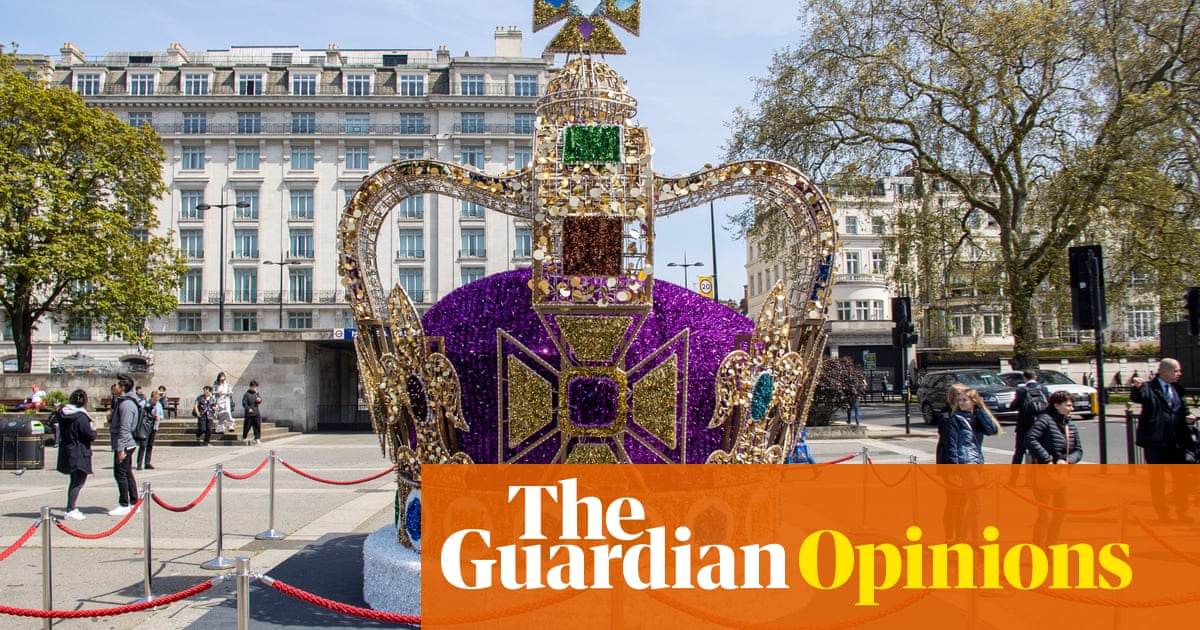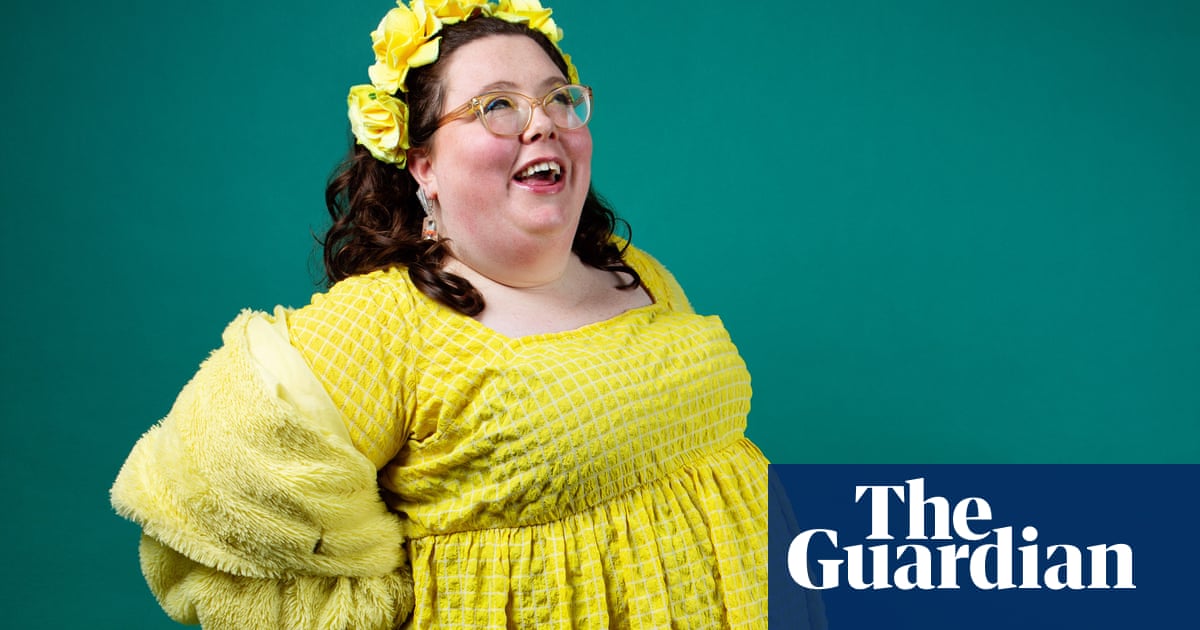
A little way into lunch, Maggi Hambling asks me, fatefully, how brittle the little rectangle of pork crackling that comes with our main course is. Before I have had time properly to answer she has bitten into it and almost immediately is fishing something out of her mouth. She studies a pair of lower front teeth on her palm. “Oh Christ! My ‘Maryland bridge’ – of which I was inordinately proud…”
Hambling responds to this small calamity in the way I imagine she has responded to much larger calamities in the past: she takes a slurp of wine, instinctively reaches for her cigarette packet, and laughs wheezily and long. She tucks her Maryland bridge haphazardly into a pocket. “At least,” she says, “you have your opening line: ‘We enjoyed a very pleasant luncheon during which half of my guest’s fucking teeth fell out…’”
We are at Snape Maltings, the arts and shopping site a mile or two away from Hambling’s home near the Suffolk coast. Hambling, who grew up nearby, is a life patron of Snape, which was created by Benjamin Britten as a home for the Aldeburgh festival in 1967. Her homage to Britten, War Requiem, is staged here each year on his birthday; she currently has a new bewitching installation in the old boiler room that brings to mind the detritus of lost civilisations and the anxieties of climate change. Hambling has been a prominent character in the area ever since she put her Scallop sculpture up on the beach at Aldeburgh in 2003, dividing local opinion. When she walks with me to the restaurant almost everyone recognises her, and nudges a companion, but no one seems remotely brave enough to stop her for a selfie. The photographer Eamonn McCabe, a friend and neighbour, used to tell her to “look defiant” and, at 75, she doesn’t need much encouragement to adopt that character.
At the beginning of lockdown she painted a self-portrait called Angry, in which her features appear out of a turbulent sea of brushstrokes (she calls the pandemic one of “God’s little jokes”). When she picked me up from Saxmundham station in her car, in layers of black on the hottest day of the year, she had something of this look on her face. She grunted a greeting and hardly spoke as she whisked me through the lanes to her nearby home and studio, where the plan was to have coffee before heading out to lunch.
Hambling can’t keep up gruffness very long; once she has a cigarette in her hand, she is all mischief and warmth. The studio, an airy space littered with fag ends and Special Brew cans and stacked with half-finished canvases and models for sculpture and trailing plants, is like one of her sea paintings, a storm of energy in which forms, including her own, sometimes resolve themselves. She has mostly lived and worked here since an unrequited but ardent admirer, Lady Gwatkin, unexpectedly left her the house and some adjacent acres of water meadows in her will in 1994. Hambling’s partner of nearly 40 years, Tory Lawrence, once married to the jockey Lord Oaksey, is asleep next door. They share the cottage with Peggy, a small black pug with only one eye, who arrived from “pug rescue” on Hambling’s 75th birthday last year.
Her routine is to get up at 5 or 6am and work in the mornings – “Stiffen the sinews, summon the blood” admonishes the sign on the studio door – until lunchtime when, in normal times, lively company is required “to stave off doom and gloom”. “Some days,” Hambling says, “I have a whisky at six o’clock quite pleased with the day’s work and I go in the next morning and it’s all terrible. Other days I have a whisky at six thinking it’s all terrible and the next morning things don’t look too bad. Quite often I fall asleep on the sofa before the end of the second Coronation Street.”
On the way to Snape in the car I raise the subject of her recently unveiled statue To Mary Wollstonecraft in Stoke Newington, which has been the target of much hand-wringing criticism. The anger has concentrated on the figure’s nudity. Hambling is annoyed by the fact that newspapers printed pictures of only the diminutive female form rather than the full image which suggests her arising out of unformed matter and struggle. She is profoundly puzzled by feminists shy of female nakedness. Still, a part of her is amused by the outrage.
Her great friend, the novelist Paul Bailey – Pearl Barley as she calls him – sends her weekly poems, addressed to “Commander O’Hambling, The Radclyffe Hall World of Leather”. He was first to alert her to a Channel 4 report on the north London “furore”. “Two minutes later he called me, and in his campest voice said, ‘Well, well! You have put the pussy among the pigeons this time!’” She laughs wickedly. “The next day I was coming out of Waitrose in Saxmundham, and one these big jolly Suffolk ladies came up to me and gave me a big grin and said: ‘Been making trouble again, I see!’”
The new River View restaurant at Snape is due for reopening the week after we visit, so we are, grandly, the only guests in the high-beamed loft room, where Hambling is indulged like a favourite aunt. I wonder if she has been put off public statuary for good? “Oh,” she says, “There is still the idea of me doing one for Joe Orton. The mind boggles with what one might come up with. There are always these goody goody people telling you you’ve done the wrong thing.”
Ever since she pitched up at the eccentric East Anglian School of Painting and Drawing, run by artist Lett Haines and his baronet boyfriend, the plantsman Cedric Morris, aged 16, she has never been that interested in courting polite opinion. Her voice echoes around the airy wooden loft. “I came to London to go to Camberwell when I was 18,” she says. “Even though I had persuaded my mother to buy me a long black leather coat and I had dyed my hair crimson, I was a virgin. It was terribly embarrassing to be a virgin at art school in London in the 60s! So I drew up a list: older man, young man, woman. At the end of the first year I’d gone through my list and found I liked the woman best. So that was that.”
For many years, Hambling was a late-night fixture in Soho, alongside her friends George Melly and Francis Bacon’s muse Henrietta Moraes, Queen of the Colony Room, who became Hambling’s lover in the last year of her life. Most of those partners in revels, including the dandy Sebastian Horsley, who called her “mother”, are now dead. When I ask whether she misses that world, she recalls the last time she was in Soho with a friend, and decided to go to a gay club for old times’ sake. “We went down the stairs to this place and it was quite extraordinary. It was full of women on computers drinking mineral water. Not even any music. If that is what things have come to, I thought, I’m not missing much.”
The thing she has probably missed most in lockdown, she suggests, is her Sunday morning tennis game, now happily back on. She has been taking tips from Andy Murray, who collects her work, and whose portrait she has recently made for the National Portrait Gallery. She’s not sure whether his advice is working. “It’s the kind of game in which you send a lob up, and one of your opponents says: I don’t think I’ll get there but I’m on my way.”
After the incident with the crackling, Hambling is understandably wary of any further dental emergencies. She reads out the dessert option: “Dark chocolate orange mousse pistachio brittle”, and winces at that last phrase. She reminds me of a joke her friend Max Wall used to tell, about taking a woman out for dinner and realising it was going to be a cheap date because when the woman smiled he saw she had no teeth. “I blame my mother,” she says. “The dentist in Hadleigh, where we lived, used to fancy her, so she was always too embarrassed to take us.”
Driving back to the station she points out the churchyard in which there are a dozen unrelated Hamblings buried, which she has half an eye on. She talks of her late father, a rather distant bank manager who became a painter in retirement, and whom she has painted over and over since he died. And about her hero Just William, who, whatever the scrape, always came up smiling. She pats her pocket for her missing teeth. “Laughing,” she says, fixing me with a violent stare, “is a very serious business.” And she’s off again.












